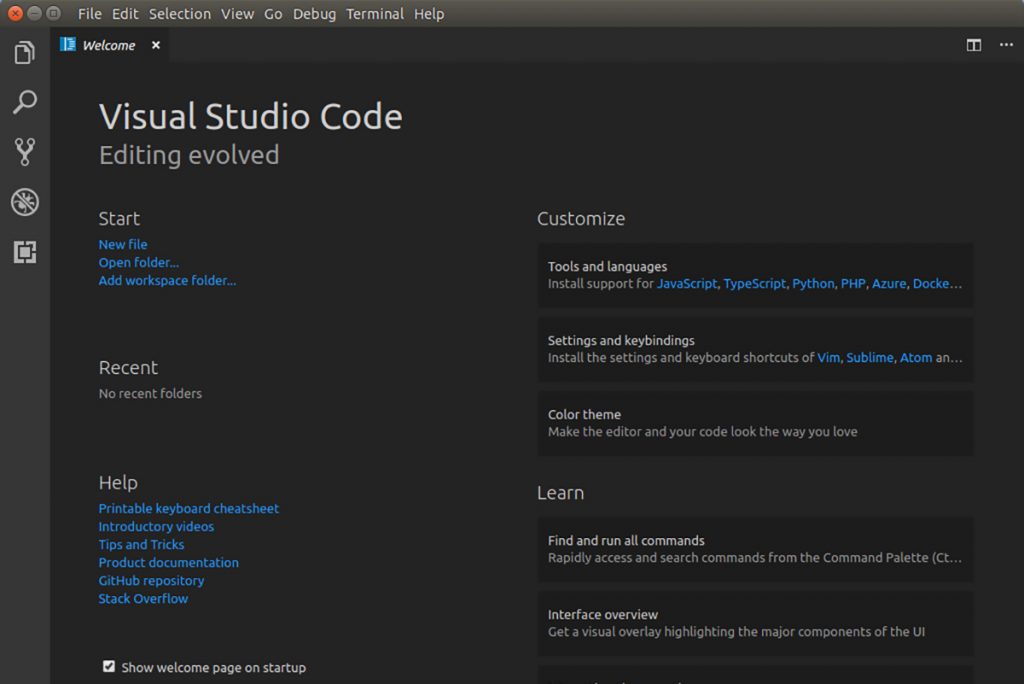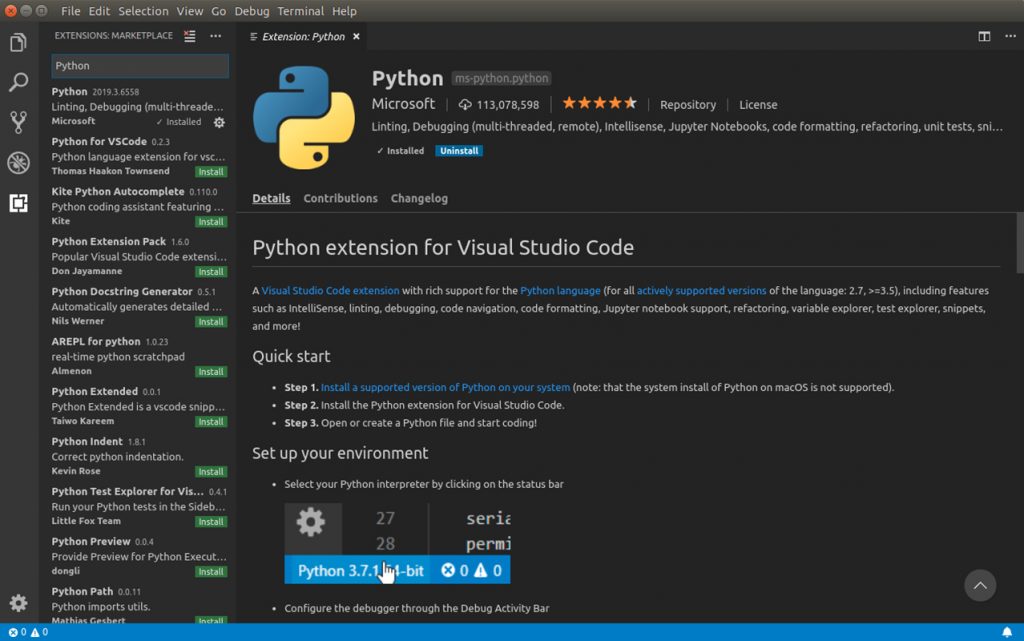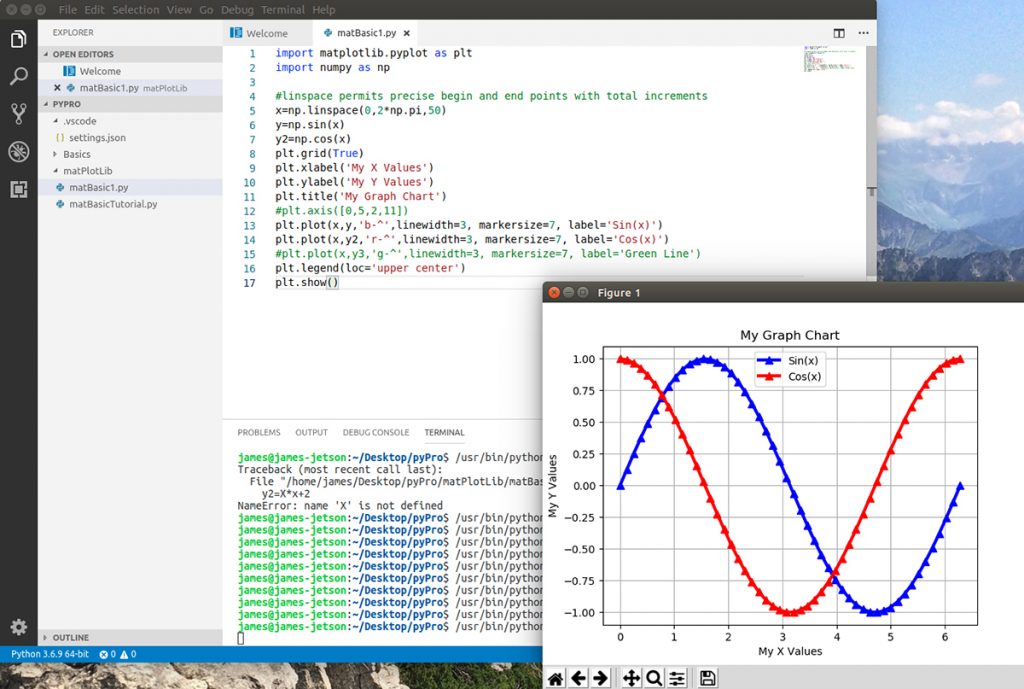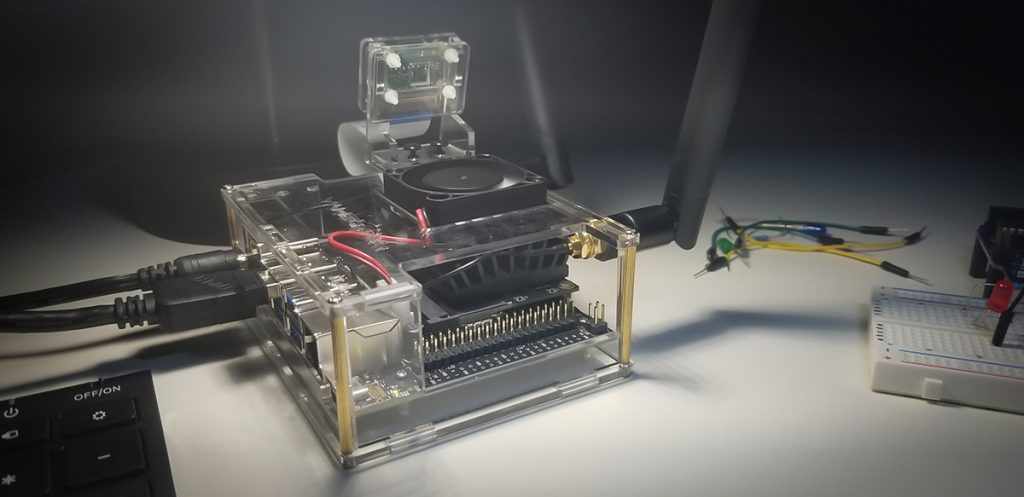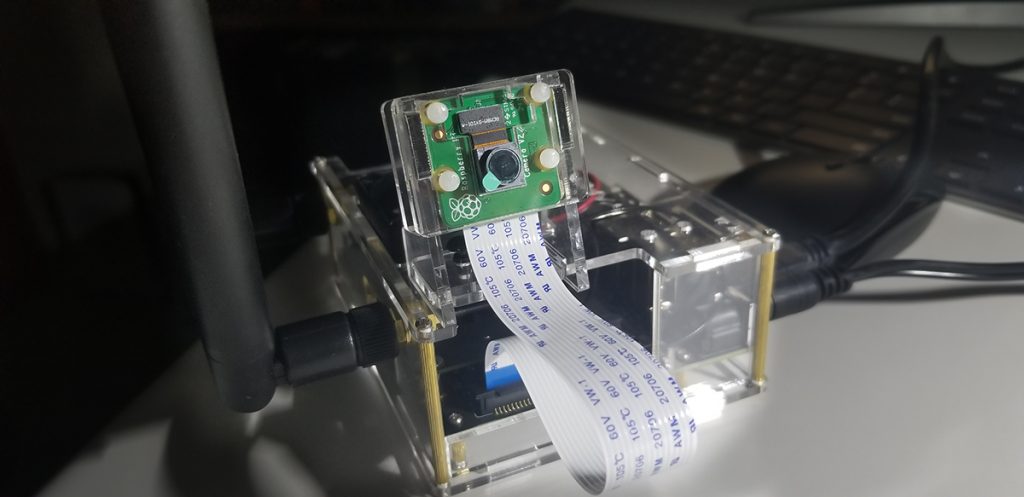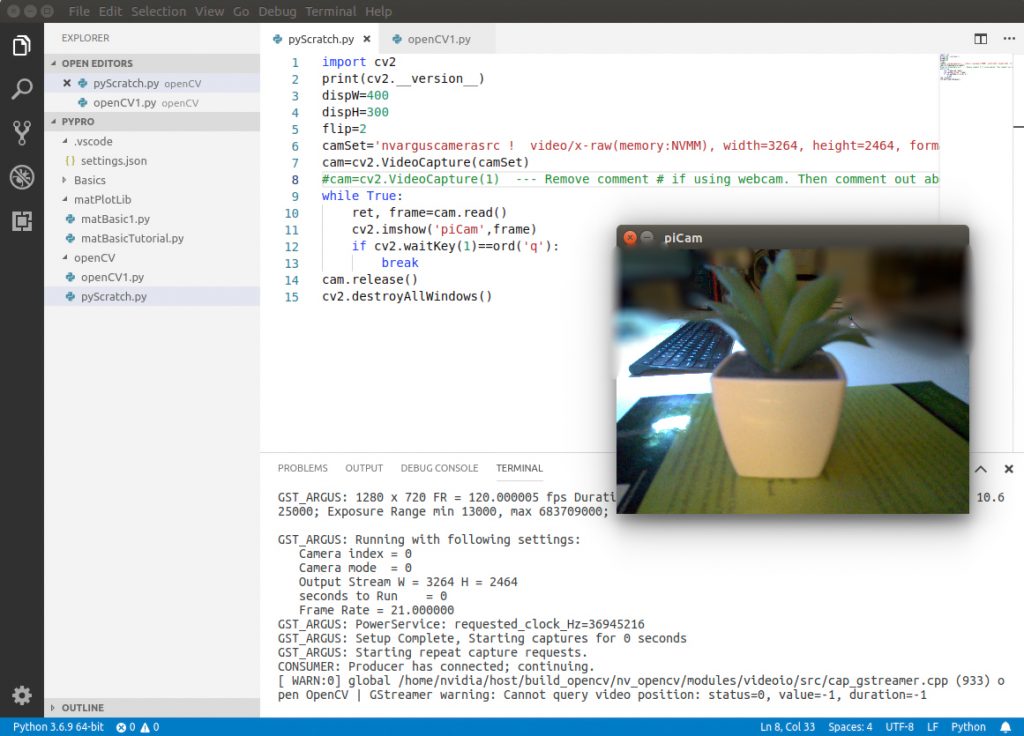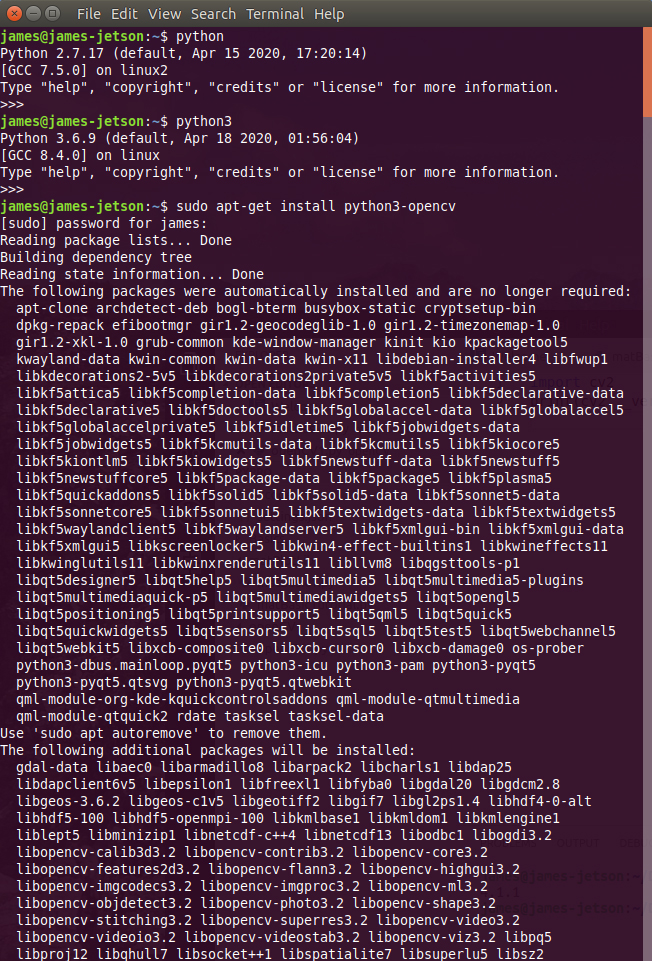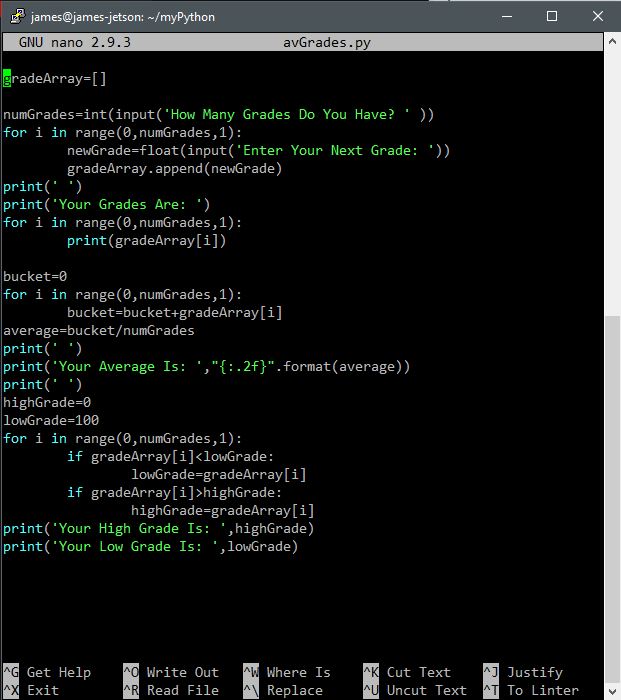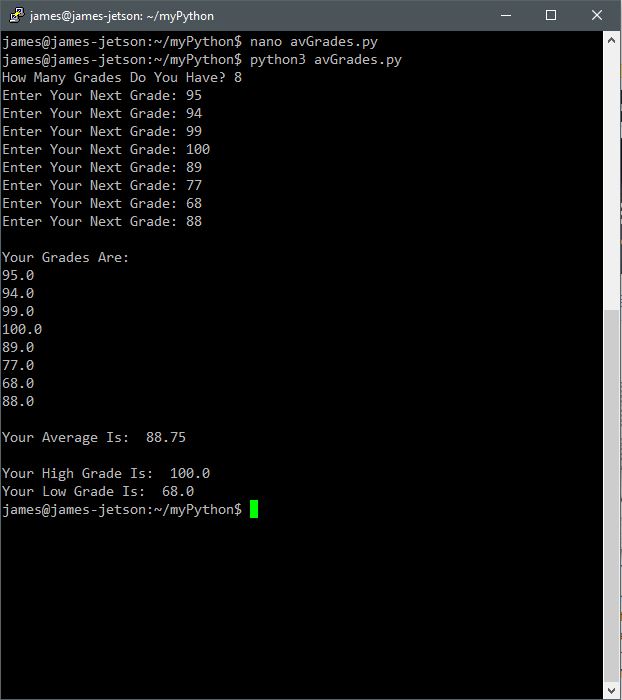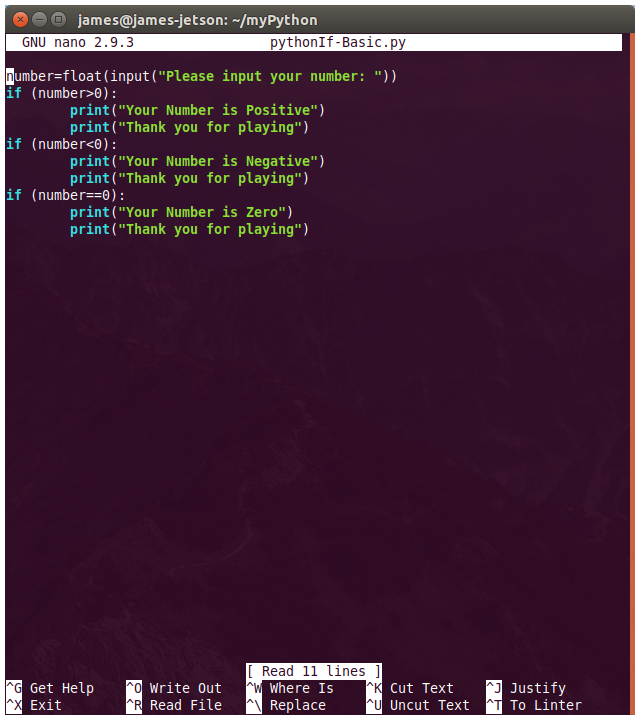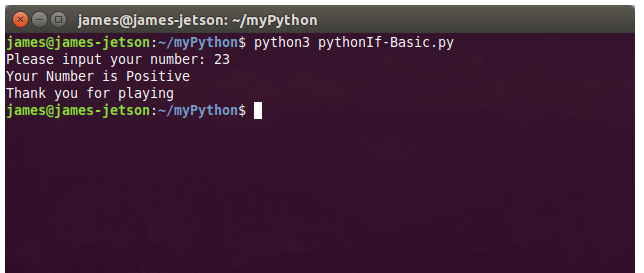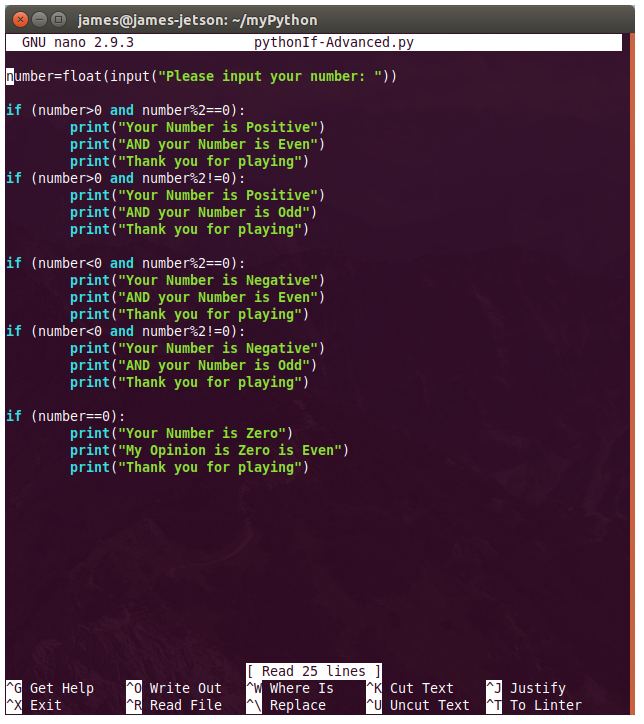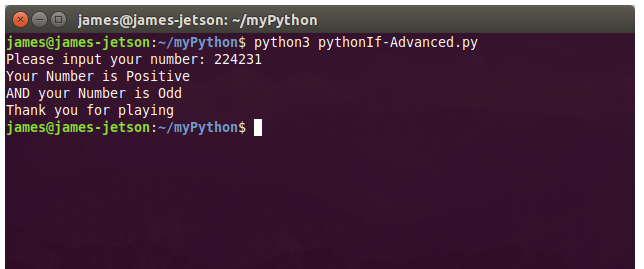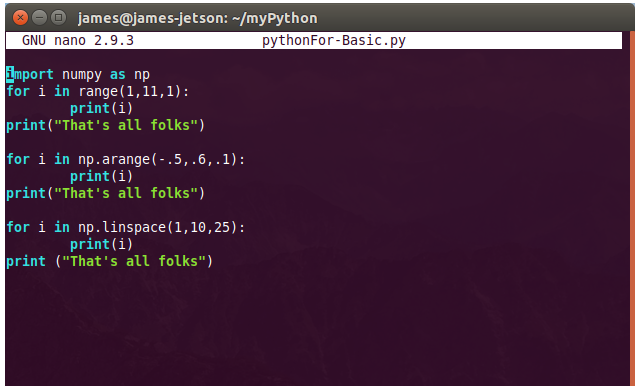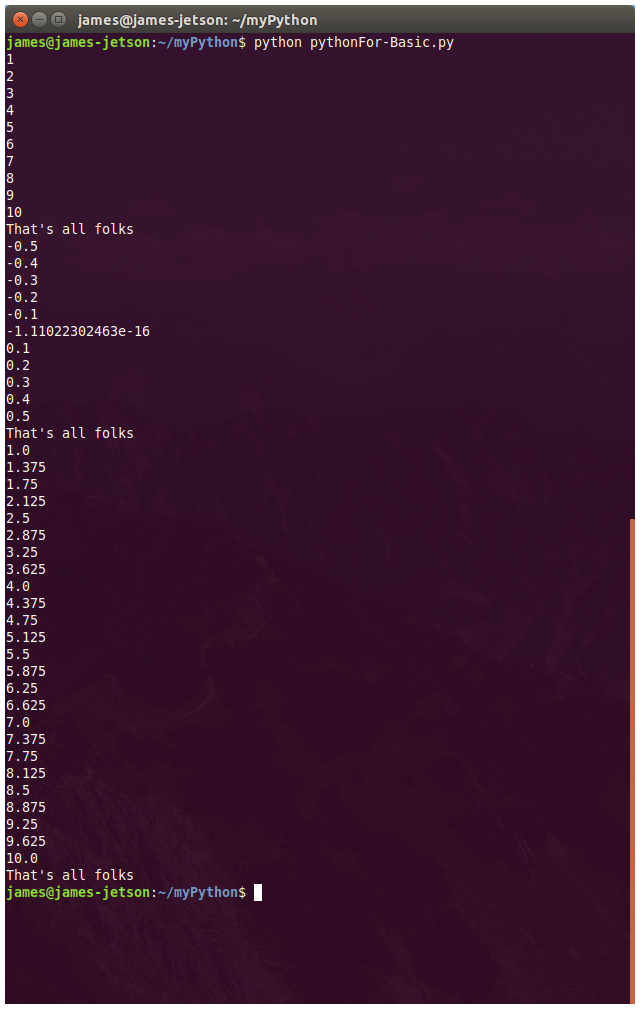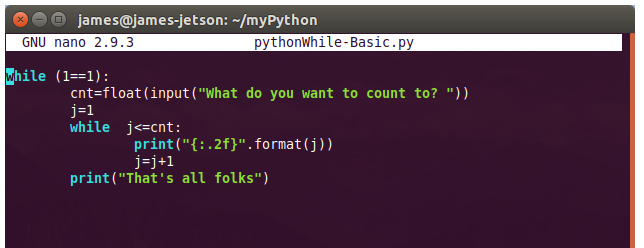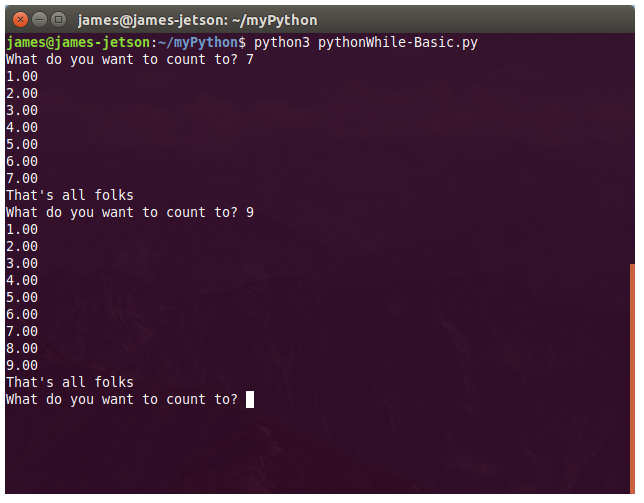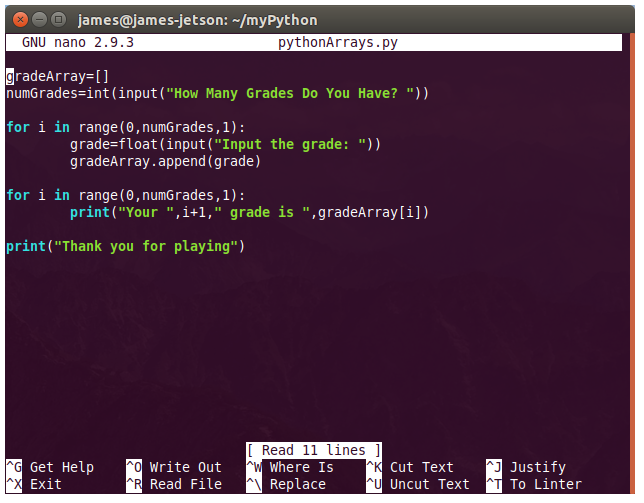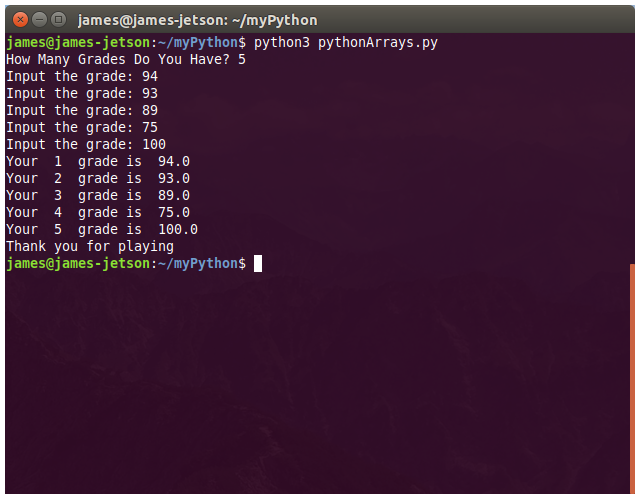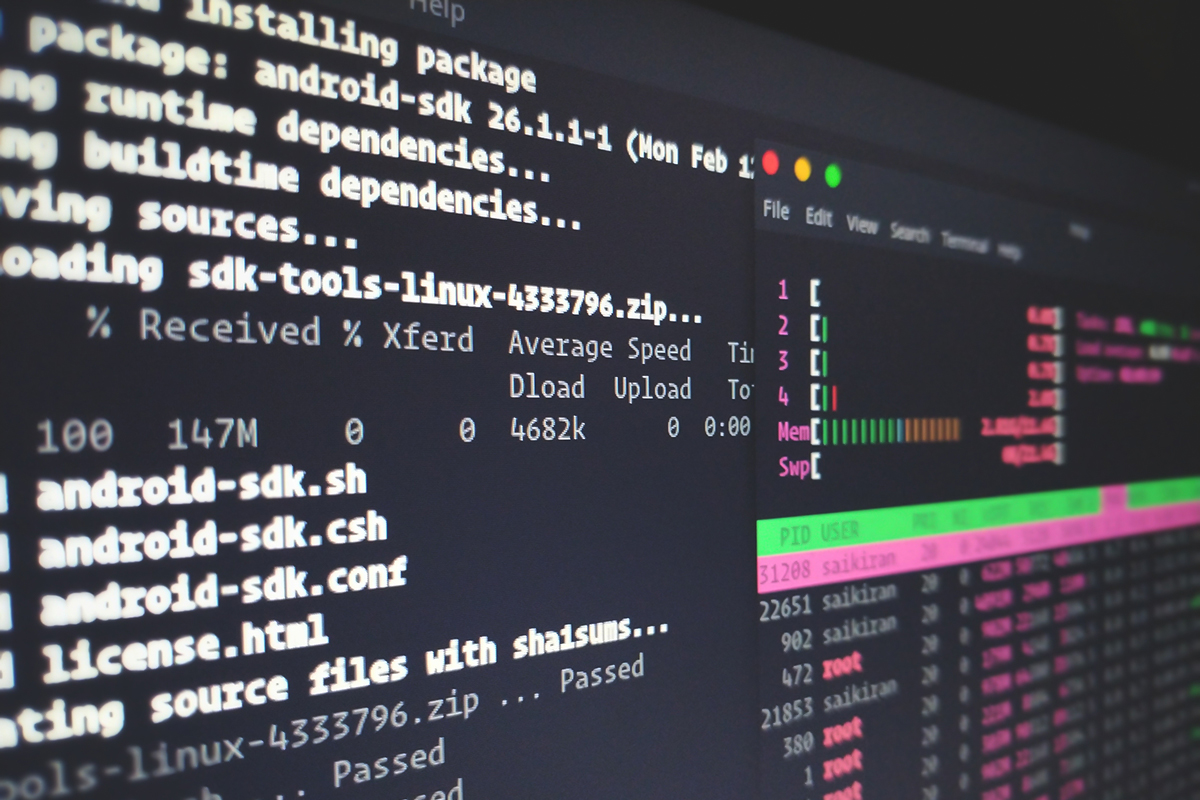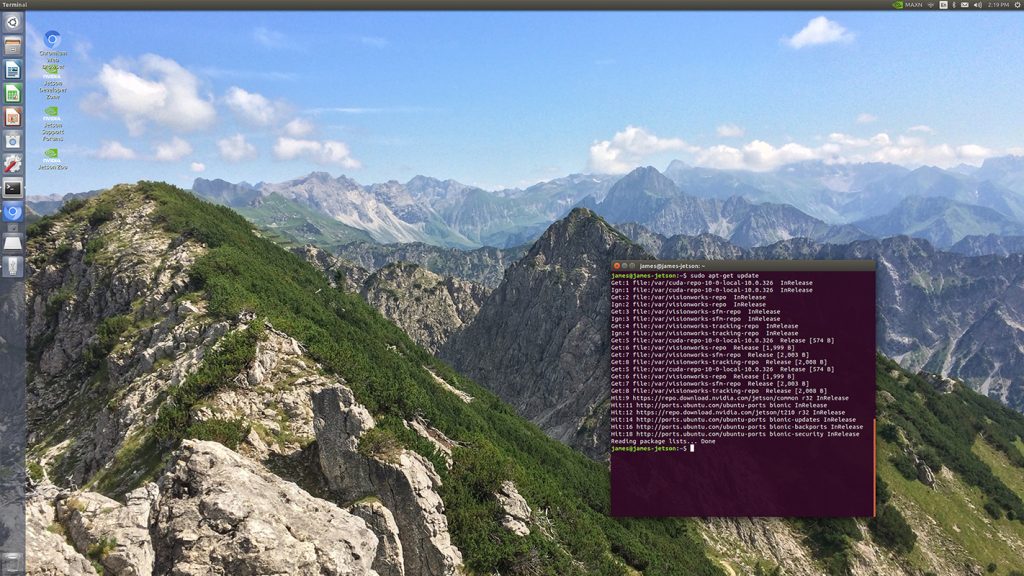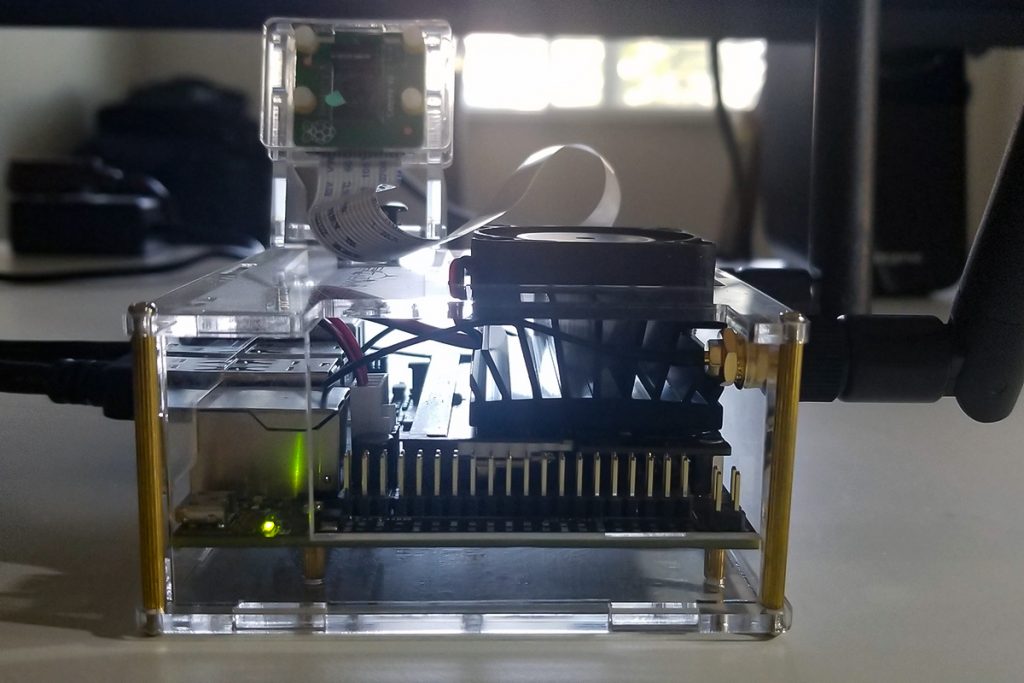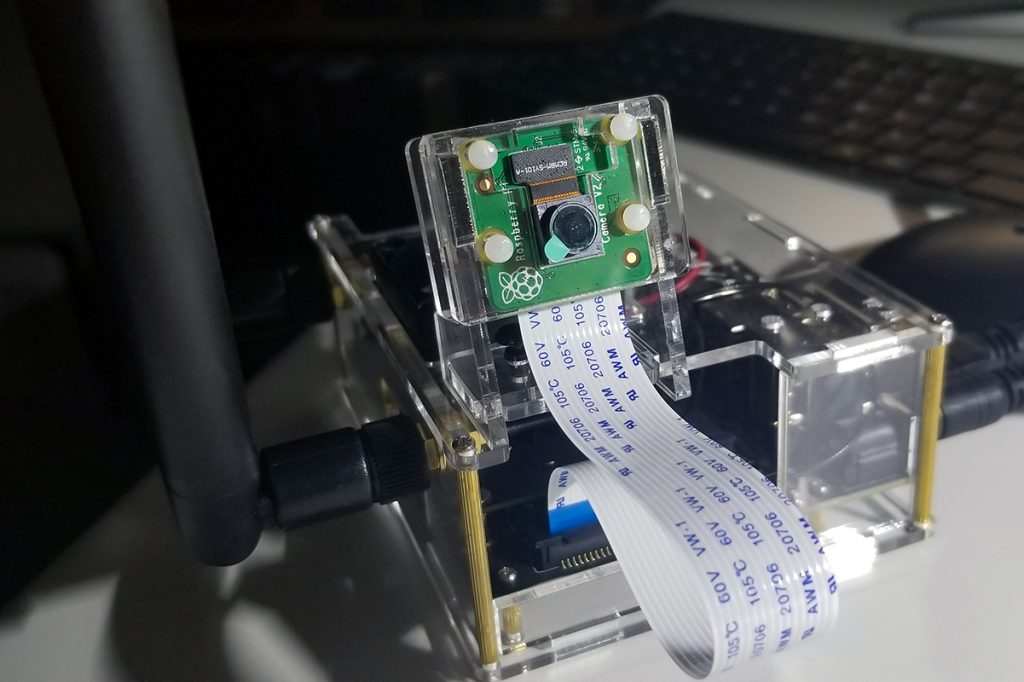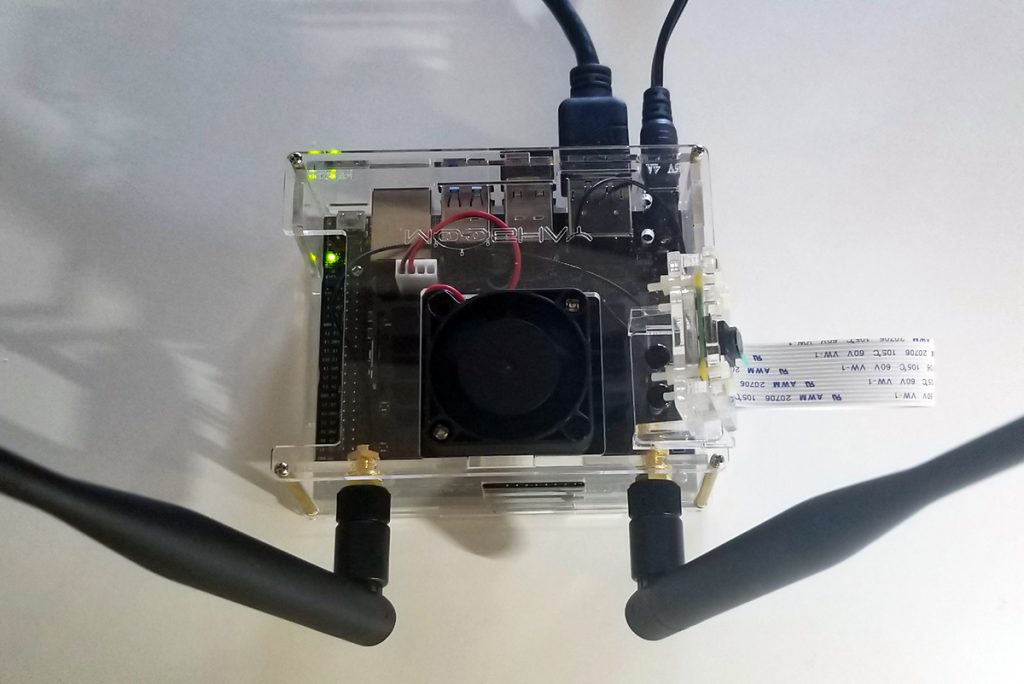| Linux Commands – A | |
| |
| Command | Description |
| accept | Accept or Reject jobs to a destination, such as a printer. |
| access | Check a user’s RWX permission for a file. |
| aclocal | GNU autoconf too |
| aconnect | ALSA sequencer connection manager. |
| acpi | Show information about the Advanced Configuration and Power Interface. |
| acpi_available | Check if ACPI functionality exists on the system. |
| acpid | Informs user-space programs about ACPI events. |
| addr2line | Used to convert addresses into file names and line numbers. |
| addresses | Formats for internet mail addresses. |
| agetty | An alternative Linux Getty |
| alias | Create an alias for Linux commands |
| alsactl | Access advanced controls for ALSA soundcard driver. |
| amidi | Perform read/write operation for ALSA RawMIDI ports. |
| amixer | Access CLI-based mixer for ALSA soundcard driver. |
| anacron | Used to run commands periodically. |
| aplay | Sound recorder and player for CLI. |
| aplaymidi | CLI utility used to play MIDI files. |
| apm | Show Advanced Power Management (APM) hardware info on older systems. |
| apmd | Used to handle events reported by APM BIOS drivers. |
| apropos | Shows the list of all man pages containing a specific keyword |
| apt | Advanced Package Tool, a package management system for Debian and derivatives. |
| apt-get | Command-line utility to install/remove/update packages based on APT system. |
| aptitude | Another utility to add/remove/upgrade packages based on the APT system. |
| ar | A utility to create/modify/extract from archives. |
| arch | Display print machine hardware name. |
| arecord | Just like aplay, it’s a sound recorder and player for ALSA soundcard driver. |
| arecordmidi | Record standard MIDI files. |
| arp | Used to make changes to the system’s ARP cache |
| as | A portable GNU assembler. |
| aspell | An interactive spell checker utility. |
| at | Used to schedule command execution at specified date & time, reading commands from an input file. |
| atd | Used to execute jobs queued by the at command. |
| atq | List a user’s pending jobs for the at command. |
| atrm | Delete jobs queued by the at command. |
| audiosend | Used to send an audio recording as an email. |
| aumix | An audio mixer utility. |
| autoconf | Generate configuration scripts from a TEMPLATE-FILE and send the output to standard output. |
| autoheader | Create a template header for configure. |
| automake | Creates GNU standards-compliant Makefiles from template files |
| autoreconf | Update generated configuration files. |
| autoscan | Generate a preliminary configure.in |
| autoupdate | Update a configure.in file to newer autoconf. |
| awk | Used to find and replace text in a file(s). |
| |
| Linux Commands – B | |
| |
| Command | Description |
| badblocks | Search a disk partition for bad sectors. |
| banner | Used to print characters as a poster. |
| basename | Used to display filenames with directoy or suffix. |
| bash | GNU Bourne-Again Shell. |
| batch | Used to run commands entered on a standard input. |
| bc | Access the GNU bc calculator utility. |
| bg | Send processes to the background. |
| biff | Notify about incoming mail and sender’s name on a system running comsat server. |
| bind | Used to attach a name to a socket. |
| bison | A GNU parser generator, compatible with yacc. |
| break | Used to exit from a loop (eg: for, while, select). |
| builtin | Used to run shell builtin commands, make custom functions for commands extending their functionality. |
| bzcmp | Used to call the cmp program for bzip2 compressed files. |
| bzdiff | Used to call the diff program for bzip2 compressed files. |
| bzgrep | Used to call grep for bzip2 compressed files. |
| bzip2 | A block-sorting file compressor used to shrink given files. |
| bzless | Used to apply ‘less’ (show info one page at a time) to bzip2 compressed files. |
| bzmore | Used to apply ‘more’ (an inferior version of less) to bzip2 compressed files. |
| |
| Linux Commands – C | |
| |
| Command | Description |
| cal | Show calendar. |
| cardctl | Used to control PCMCIA sockets and select configuration schemes. |
| cardmgr | Keeps an eye on the added/removes sockets for PCMCIA devices. |
| case | Execute a command conditionally by matching a pattern. |
| cat | Used to concatenate files and print them on the screen. |
| cc | GNU C and C++ compiler. |
| cd | Used to change directory. |
| cdda2wav | Used to rip a CD-ROM and make WAV file. |
| cdparanoia | Record audio from CD more reliably using data-verification algorithms. |
| cdrdao | Used to write all the content specified to a file to a CD all at once. |
| cdrecord | Used to record data or audio compact discs. |
| cfdisk | Show or change the disk partition table. |
| chage | Used to change user password information. |
| chattr | Used to change file attributes. |
| chdir | Used to change active working directory. |
| chfn | Used to change real user name and information. |
| chgrp | Used to change group ownership for file. |
| chkconfig | Manage execution of runlevel services. |
| chmod | Change access permission for a file(s). |
| chown | Change the owner or group for a file. |
| chpasswd | Update password in a batch. |
| chroot | Run a command with root privileges. |
| chrt | Alter process attributed in real-time. |
| chsh | Switch login shell. |
| chvt | Change foreground virtual terminal. |
| cksum | Perform a CRC checksum for files. |
| clear | Used to clear the terminal window. |
| cmp | Compare two files (byte by byte). |
| col | Filter reverse (and half-reverse) line feeds from the input. |
| colcrt | Filter nroff output for CRT previewing. |
| colrm | Remove columns from the lines of a file. |
| column | A utility that formats its input into columns. |
| comm | Used to compare two sorted files line by line. |
| command | Used to execute a command with arguments ignoring shell function named command. |
| compress | Used to compress one or more file(s) and replacing the originals ones. |
| continue | Resume the next iteration of a loop. |
| cp | Copy contents of one file to another. |
| cpio | Copy files from and to archives. |
| cpp | GNU C language processor. |
| cron | A daemon to execute scheduled commands. |
| crond | Same work as cron. |
| crontab | Manage crontab files (containing schedules commands) for users. |
| csplit | Split a file into sections on the basis of context lines. |
| ctags | Make a list of functions and macro names defined in a programming source file. |
| cupsd | A scheduler for CUPS. |
| curl | Used to transfer data from or to a server using supported protocols. |
| cut | Used to remove sections from each line of a file(s). |
| cvs | Concurrent Versions System. Used to track file versions, allow storage/retrieval of previous versions, and enables multiple users to work on the same file. |
| |
| Linux Commands – D | |
| |
| Command | Description |
| date | Show system date and time. |
| dc | Desk calculator utility. |
| dd | Used to convert and copy a file, create disk clone, write disk headers, etc. |
| ddrescue | Used to recover data from a crashed partition. |
| deallocvt | Deallocates kernel memory for unused virtual consoles. |
| debugfs | File system debugger for ext2/ext3/ext4 |
| declare | Used to declare variables and assign attributes. |
| depmod | Generate modules.dep and map files. |
| devdump | Interactively displays the contents of device or file system ISO. |
| df | Show disk usage. |
| diff | Used to compare files line by line. |
| diff3 | Compare three files line by line. |
| dig | Domain Information Groper, a DNS lookup utility. |
| dir | List the contents of a directory. |
| dircolors | Set colors for ‘ls’ by altering the LS_COLORS environment variable. |
| dirname | Display pathname after removing the last slash and characters thereafter. |
| dirs | Show the list of remembered directories. |
| disable | Restrict access to a printer. |
| dlpsh | Interactive Desktop Link Protocol (DLP) shell for PalmOS. |
| dmesg | Examine and control the kernel ring buffer. |
| dnsdomainname | Show the DNS domain name of the system. |
| dnssec-keygen | Generate encrypted Secure DNS keys for a given domain name. |
| dnssec-makekeyset | Produce domain key set from one or more DNS security keys generated by dnssec-keygen. |
| dnssec-signkey | Sign a secure DNS keyset with key signatures specified in the list of key-identifiers. |
| dnssec-signzone | Sign a secure DNS zonefile with the signatures in the specified list of key-identifiers. |
| doexec | Used to run an executable with an arbitrary argv list provided. |
| domainname | Show or set the name of current NIS (Network Information Services) domain. |
| dosfsck | Check and repair MS-DOS file systems. |
| du | Show disk usage summary for a file(s). |
| dump | Backup utility for ext2/ext3 file systems. |
| dumpe2fs | Dump ext2/ext3/ext4 file systems. |
| dumpkeys | Show information about the keyboard driver’s current translation tables. |
| |
| Linux Commands – E | |
| |
| Command | Desription |
| e2fsck | Used to check ext2/ext3/ext4 file systems. |
| e2image | Store important ext2/ext3/ext4 filesystem metadata to a file. |
| e2label | Show or change the label on an ext2/ext3/ext4 filesystem. |
| echo | Send input string(s) to standard output i.e. display text on the screen. |
| ed | GNU Ed – a line-oriented text editor. |
| edquota | Used to edit filesystem quotas using a text editor, such as vi. |
| egrep | Search and display text matching a pattern. |
| eject | Eject removable media. |
| elvtune | Used to set latency in the elevator algorithm used to schedule I/O activities for specified block devices. |
| emacs | Emacs text editor command line utility. |
| enable | Used to enable/disable shell builtin commands. |
| env | Run a command in a modified environment. Show/set/delete environment variables. |
| envsubst | Substitute environment variable values in shell format strings. |
| esd | Start the Enlightenment Sound Daemon (EsounD or esd). Enables multiple applications to access the same audio device simultaneously. |
| esd-config | Manage EsounD configuration. |
| esdcat | Use EsounD to send audio data from a specified file. |
| esdctl | EsounD control program. |
| esddsp | Used to reroute non-esd audio data to esd and control all the audio using esd. |
| esdmon | Used to copy the sound being sent to a device. Also, send it to a secondary device. |
| esdplay | Use EsounD system to play a file. |
| esdrec | Use EsounD to record audio to a specified file. |
| esdsample | Sample audio using esd. |
| etags | Used to create a list of functions and macros from a programming source file. These etags are used by emacs. For vi, use ctags. |
| ethtool | Used to query and control network driver and hardware settings. |
| eval | Used to evaluate multiple commands or arguments are once. |
| ex | Interactive command |
| exec | An interactive line-based text editor. |
| exit | Exit from the terminal. |
| expand | Convert tabs into spaces in a given file and show the output. |
| expect | An extension to the Tcl script, it’s used to automate interaction with other applications based on their expected output. |
| export | Used to set an environment variable. |
| expr | Evaluate expressions and display them on standard output. |
| |
| Linux Commands – F | |
| |
| Command | Description |
| factor | Display prime factors of specified integer numbers. |
| FALSE | Do nothing, unsuccessfully. Exit with a status code indicating failure. |
| fc-cache | Make font information cache after scanning the directories. |
| fc-list | Show the list of available fonts. |
| fdformat | Do a low-level format on a floppy disk. |
| fdisk | Make changes to the disk partition table. |
| fetchmail | Fetch mail from mail servers and forward it to the local mail delivery system. |
| fg | Used to send a job to the foreground. |
| fgconsole | Display the number of the current virtual console. |
| fgrep | Display lines from a file(s) that match a specified string. A variant of grep. |
| file | Determine file type for a file. |
| find | Do a file search in a directory hierarchy. |
| finger | Display user data including the information listed in .plan and .project in each user’s home directory. |
| fingerd | Provides a network interface for the finger program. |
| flex | Generate programs that perform pattern-matching on text. |
| fmt | Used to convert text to a specified width by filling lines and removing new lines, displaying the output. |
| fold | Wrap input line to fit in a specified width. |
| for | Expand words and run commands for each one in the resultant list. |
| formail | Used to filter standard input into mailbox format. |
| format | Used to format disks. |
| free | Show free and used system memory. |
| fsck | Check and repair a Linux file system |
| ftp | File transfer protocol user interface. |
| ftpd | FTP server process. |
| function | Used to define function macros. |
| fuser | Find and kill a process accessing a file. |
| |
| Linux Commands – G | |
| |
| Command | Description |
| g++ | Run the g++ compiler. |
| gawk | Used for pattern scanning and language processing. A GNU implementation of AWK language. |
| gcc | A C and C++ compiler by GNU. |
| gdb | A utility to debug programs and know about where it crashes. |
| getent | Shows entries from Name Service Switch Libraries for specified keys. |
| getkeycodes | Displays the kernel scancode-to-keycode mapping table. |
| getopts | A utility to parse positional parameters. |
| gpasswd | Allows an administrator to change group passwords. |
| gpg | Enables encryption and signing services as per the OpenPGP standard. |
| gpgsplit | Used to split an OpenPGP message into packets. |
| gpgv | Used to verify OpenPGP signatures. |
| gpm | It enables cut and paste functionality and a mouse server for the Linux console. |
| gprof | Shows call graph profile data. |
| grep | Searches input files for a given pattern and displays the relevant lines. |
| groff | Serves as the front-end of the groff document formatting system. |
| groffer | Displays groff files and man pages. |
| groupadd | Used to add a new user group. |
| groupdel | Used to remove a user group. |
| groupmod | Used to modify a group definition. |
| groups | Show the group(s) to which a user belongs. |
| grpck | Verifies the integrity of group files. |
| grpconv | Creates a gshadow file from a group or an already existing gshadow. |
| gs | Invokes Ghostscript, and interpreter and previewer for Adobe’s PostScript and PDF languages. |
| gunzip | A utility to compress/expand files. |
| gzexe | Used compress executable files in place and have them automatically uncompress and run at a later stage. |
| gzip | Same as gzip. |
| |
| Linux Commands – H | |
| |
| Command | Description |
| halt | Command used to half the machine. |
| hash | Shows the path for the commands executed in the shell. |
| hdparm | Show/configure parameters for SATA/IDE devices. |
| head | Shows first 10 lines from each specified file. |
| help | Display’s help for a built-in command. |
| hexdump | Shows specified file output in hexadecimal, octal, decimal, or ASCII format. |
| history | Shows the command history. |
| host | A utility to perform DNS lookups. |
| hostid | Shows host’s numeric ID in hexadecimal format. |
| hostname | Display/set the hostname of the system. |
| htdigest | Manage the user authentication file used by the Apache web server. |
| htop | An interactive process viewer for the command line. |
| hwclock | Show or configure the system’s hardware clock. |
| |
| Linux Commands – I | |
| |
| Command | Description |
| iconv | Convert text file from one encoding to another. |
| id | Show user and group information for a specified user. |
| if | Execute a command conditionally. |
| ifconfig | Used to configure network interfaces. |
| ifdown | Stops a network interface. |
| ifup | Starts a network interface. |
| imapd | An IMAP (Interactive Mail Access Protocol) server daemon. |
| import | Capture an X server screen and saves it as an image. |
| inetd | Extended internet services daemon, it starts the programs that provide internet services. |
| info | Used to read the documentation in Info format. |
| init | Systemd system and service manager. |
| insmod | A program that inserts a module into the Linux kernel. |
| install | Used to copy files to specified locations and set attributions during the install process. |
| iostat | Shows statistics for CPU, I/O devices, partitions, network filesystems. |
| ip | Display/manipulate routing, devices, policy, routing and tunnels. |
| ipcrm | Used to remove System V interprocess communication (IPC) objects and associated data structures. |
| ipcs | Show information on IPC facilities for which calling process has read access. |
| iptables | Administration tool for IPv4 packet filtering and NAT. |
| iptables-restore | Used to restore IP tables from data specified in the input or a file. |
| iptables-save | Used to dump IP table contents to standard output. |
| isodump | A utility that shows the content iso9660 images to verify the integrity of directory contents. |
| isoinfo | A utility to perform directory like listings of iso9660 images. |
| isosize | Show the length of an iso9660 filesystem contained in a specified file. |
| isovfy | Verifies the integrity of an iso9660 image. |
| ispell | A CLI-based spell-check utility. |
| |
| Linux Commands – J | |
| |
| Command | Description |
| jobs | Show the list of active jobs and their status. |
| join | For each pair of input lines, join them using a command field and display on standard output. |
| |
| Linux Commands – K | |
| |
| Command | Description |
| kbd_mode | Set a keyboard mode. Without arguments, shows the current keyboard mode. |
| kbdrate | Reset keyboard repeat rate and delay time. |
| kill | Send a kill (termination) signal to one more processes. |
| killall | Kills a process(es) running a specified command. |
| killall5 | A SystemV killall command. Kills all the processes excluding the ones which it depends on. |
| klogd | Control and prioritize the kernel messages to be displayed on the console, and log them through syslogd. |
| kudzu | Used to detect new and enhanced hardware by comparing it with existing database. Only for RHEL and derivates. |
| |
| Linux Commands – L | |
| |
| Command | Description |
| last | Shows a list of recent logins on the system by fetching data from /var/log/wtmp file. |
| lastb | Shows the list of bad login attempts by fetching data from /var/log/btmp file. |
| lastlog | Displays information about the most recent login of all users or a specified user. |
| ld | The Unix linker, it combines archives and object files. It then puts them into one output file, resolving external references. |
| ldconfig | Configure dynamic linker run-time bindings. |
| ldd | Shows shared object dependencies. |
| less | Displays contents of a file one page at a time. It’s advanced than more command. |
| lesskey | Used to specify key bindings for less command. |
| let | Used to perform integer artithmetic on shell variables. |
| lftp | An FTP utility with extra features. |
| lftpget | Uses lftop to retrieve HTTP, FTP, and other protocol URLs supported by lftp. |
| link | Create links between two files. Similar to ln command. |
| ln | Create links between files. Links can be hard (two names for the same file) or soft (a shortcut of the first file). |
| loadkeys | Load keyboard translation tables. |
| local | Used to create function variables. |
| locale | Shows information about current or all locales. |
| locate | Used to find files by their name. |
| lockfile | Create semaphore file(s) which can be used to limit access to a file. |
| logger | Make entries in the system log. |
| login | Create a new session on the system. |
| logname | Shows the login name of the current user. |
| logout | Performs the logout operation by making changes to the utmp and wtmp files. |
| logrotate | Used for automatic rotation, compression, removal, and mailing of system log files. |
| look | Shows any lines in a file containing a given string in the beginning. |
| losetup | Set up and control loop devices. |
| lpadmin | Used to configure printer and class queues provided by CUPS (Common UNIX Printing System). |
| lpc | Line printer control program, it provides limited control over CUPS printer and class queues. |
| lpinfo | Shows the list of avaiable devices and drivers known to the CUPS server. |
| lpmove | Move on or more printing jobs to a new destination. |
| lpq | Shows current print queue status for a specified printer. |
| lpr | Used to submit files for printing. |
| lprint | Used to print a file. |
| lprintd | Used to abort a print job. |
| lprintq | List the print queue. |
| lprm | Cancel print jobs. |
| lpstat | Displays status information about current classes, jobs, and printers. |
| ls | Shows the list of files in the current directory. |
| lsattr | Shows file attributes on a Linux ext2 file system. |
| lsblk | Lists information about all available or the specified block devices. |
| lsmod | Show the status of modules in the Linux kernel. |
| lsof | List open files. |
| lspci | List all PCI devices. |
| lsusb | List USB devices. |
| |
| Linux Commands – M | |
| |
| Command | Description |
| m4 | Macro processor. |
| mail | Utility to compose, receive, send, forward, and reply to emails. |
| mailq | Shows to list all emails queued for delivery (sendmail queue). |
| mailstats | Shows current mail statistics. |
| mailto | Used to send mail with multimedia content in MIME format. |
| make | Utility to maintain groups of programs, recompile them if needed. |
| makedbm | Creates an NIS (Network Information Services) database map. |
| makemap | Creates database maps used by the keyed map lookups in sendmail. |
| man | Shows manual pages for Linux commands. |
| manpath | Determine search path for manual pages. |
| mattrib | Used to change MS-DOS file attribute flags. |
| mbadblocks | Checks MD-DOS filesystems for bad blocks. |
| mcat | Dump raw disk image. |
| mcd | Used to change MS-DOS directory. |
| mcopy | Used to copy MS-DOS files from or to Unix. |
| md5sum | Used to check MD5 checksum for a file. |
| mdel, mdeltree | Used to delete MS-DOS file. mdeltree recursively deletes MS-DOS directory and its contents. |
| mdir | Used to display an MS-DOS directory. |
| mdu | Used to display the amount of space occupied by an MS-DOS directory. |
| merge | Three-way file merge. Includes all changes from file2 and file3 to file1. |
| mesg | Allow/disallow osends to sedn write messages to your terminal. |
| metamail | For sending and showing rich text or multimedia email using MIME typing metadata. |
| metasend | An interface for sending non-text mail. |
| mformat | Used to add an MS-DOS filesystem to a low-level formatted floppy disk. |
| mimencode | Translate to/from MIME multimedia mail encoding formats. |
| minfo | Display parameters of an MS-DOS filesystem. |
| mkdir | Used to create directories. |
| mkdosfs | Used to create an MS-DOS filesystem under Linux. |
| mke2fs | Used create an ext2/ext3/ext4 filesystem. |
| mkfifo | Used to create named pipes (FIFOs) with the given names. |
| mkfs | Used to build a Linux filesystem on a hard disk partition. |
| mkfs.ext3 | Same as mke2fs, create an ext3 Linux filesystem. |
| mkisofs | Used to create an ISO9660/JOLIET/HFS hybrid filesystem. |
| mklost+found | Create a lost+found directory on a mounted ext2 filesystem. |
| mkmanifest | Makes a list of file names and their DOS 8.3 equivalent. |
| mknod | Create a FIFO, block (buffered) special file, character (unbuffered) special file with the specified name. |
| mkraid | Used to setup RAID device arrays. |
| mkswap | Set up a Linux swap area. |
| mktemp | Create a temporary file or directory. |
| mlabel | Make an MD-DOS volume label. |
| mmd | Make an MS-DOS subdirectory. |
| mmount | Mount an MS-DOS disk. |
| mmove | Move or rename an MS-DOS file or subdirectory. |
| mmv | Mass move and rename files. |
| modinfo | Show information about a Linux kernel module. |
| modprobe | Add or remove modules from the Linux kernel. |
| more | Display content of a file page-by-page. |
| most | Browse or page through a text file. |
| mount | Mount a filesystem. |
| mountd | NFS mount daemon. |
| mpartition | Partition an MS-DOS disk. |
| mpg123 | Command-line mp3 player. |
| mpg321 | Similar to mpg123. |
| mrd | Remove an MS-DOS subdirectory. |
| mren | Rename an existing MS-DOS file. |
| mshowfat | Show FTA clusters allocated to a file. |
| mt | Control magnetic tape drive operation. |
| mtools | Utilities to access MS-DOS disks. |
| mtoolstest | Tests and displays the mtools configuration files. |
| mtr | A network diagnostic tool. |
| mtype | Display contents of an MS-DOS file. |
| mv | Move/rename files or directories. |
| mzip | Change protection mode and eject disk on Zip/Jaz drive. |
| |
| Linux Commands – N | |
| |
| Command | Description |
| named | Internet domain name server. |
| namei | Follow a pathname until a terminal point is found. |
| nameif | Name network interfaces based on MAC addresses. |
| nc | Netcat utility. Arbitrary TCP and UDP connections and listens. |
| netstat | Show network information. |
| newaliases | Rebuilds mail alias database. |
| newgrp | Log-in to a new group. |
| newusers | Update/create new users in batch. |
| nfsd | Special filesystem for controlling Linux NFS server. |
| nfsstat | List NFS statistics. |
| nice | Run a program with modified scheduling priority. |
| nl | Show numbered line while displaying the contents of a file. |
| nm | List symbols from object files. |
| nohup | Run a command immune to hangups. |
| notify-send | A program to send desktop notifications. |
| nslookup | Used performs DNS queries. Read this article for more info. |
| nsupdate | Dynamic DNS update utility. |
| |
| Linux Commands – O | |
| |
| Command | Description |
| objcopy | Copy and translate object files. |
| objdump | Display information from object files. |
| od | Dump files in octal and other formats. |
| op | Operator access, allows system administrators to grant users access to certain root operations that require superuser privileges. |
| open | Open a file using its default application. |
| openvt | Start a program on a new virtual terminal (VT). |
| |
| Linux Commands – P | |
| |
| Command | Description |
| passwd | Change user password. |
| paste | Merge lines of files. Write to standard output, TAB-separated lines consisting of sqentially correspnding lines from each file. |
| patch | Apply a patchfile (containing differences listing by diff program) to an original file. |
| pathchk | Check if file names are valid or portable. |
| perl | Perl 5 language interpreter. |
| pgrep | List process IDs matching the specified criteria among all the running processes. |
| pidof | Find process ID of a running program. |
| ping | Send ICMP ECHO_REQUEST to network hosts. |
| pinky | Lightweight finger. |
| pkill | Send kill signal to processes based on name and other attributes. |
| pmap | Report memory map of a process. |
| popd | Removes directory on the head of the directory stack and takes you to the new directory on the head. |
| portmap | Converts RPC program numbers to IP port numbers. |
| poweroff | Shuts down the machine. |
| pppd | Point-to-point protocol daemon. |
| pr | Convert (column or paginate) text files for printing. |
| praliases | Prints the current system mail aliases. |
| printcap | Printer capability database. |
| printenv | Show values of all or specified environment variables. |
| printf | Show arguments formatted according to a specified format. |
| ps | Report a snapshot of the current processes. |
| ptx | Produce a permuted index of file contents. |
| pushd | Appends a given directory name to the head of the stack and then cd to the given directory. |
| pv | Monitor the progress of data through a pipe. |
| pwck | Verify integrity of password files. |
| pwconv | Creates shadow from passwd and an optionally existing shadow. |
| pwd | Show current directory. |
| python | Run Python 2.X instance. |
| |
| Linux Commands – Q | |
| |
| Command | Description |
| quota | Shows disk usage, and space limits for a user or group. Without arguments, only shows user quotas. |
| quotacheck | Used to scan a file system for disk usage. |
| quotactl | Make changes to disk quotas. |
| quotaoff | Enable enforcement of filesystem quotas. |
| quotaon | Disable enforcement of filesystem quotas. |
| quotastats | Shows the report of quota system statistics gathered from the kernel. |
| |
| Linux Commands – R | |
| |
| Command | Description |
| raidstart | Start/stop RAID devices. |
| ram | RAM disk device used to access the RAM disk in raw mode. |
| ramsize | Show usage information for the RAM disk. |
| ranlib | Generate index to the contents of an archive and store it in the archive. |
| rar | Create and manage RAR file in Linux. |
| rarpd | Respond to Reverse Address Resolution Protocol (RARP) requests. |
| rcp | Remote copy command to copy files between remote computers. |
| rdate | Set system date and time by fetching information from a remote machine. |
| rdev | Set or query RAM disk size, image root device, or video mode. |
| rdist | Remote file distribution client, maintains identical file copies over multiple hosts. |
| rdistd | Start the rdist server. |
| read | Read from a file descriptor. |
| readarray | Read lines from a file into an array variable. |
| readcd | Read/write compact disks. |
| readelf | Shows information about ELF (Executable and Linkable fomrat) files. |
| readlink | Display value of a symbolic link or canonical file name. |
| readonly | Mark functions and variables as read-only. |
| reboot | Restart the machine. |
| reject | Accept/reject print jobs sent to a specified destination. |
| remsync | Synchronize remote files over email. |
| rename | Rename one or more files. |
| renice | Change priority of active processes. |
| repquota | Report disk usage and quotas for a specified filesystem. |
| reset | Reinitialize the terminal. |
| resize2fs | Used to resize ext2/ext3/ext4 file systems. |
| restore | Restore files from a backup created using dump. |
| return | Exit a shell function. |
| rev | Show contents of a file, reversing the order of characters in every line. |
| rexec | Remote execution client for exec server. |
| rexecd | Remote execution server. |
| richtext | View “richtext” on an ASCII terminal. |
| rlogin | Used to connect a local host system with a remote host. |
| rlogind | Acts as the server for rlogin. It facilitates remote login, and authentication based on privileged port numbers from trusted hosts. |
| rm | Removes specified files and directories (not by default). |
| rmail | Handle remote mail received via uucp. |
| rmdir | Used to remove empty directories. |
| rmmod | A program to remove modules from Linux kernel. |
| rndc | Name server control utility. Send command to a BIND DNS server over a TCP connection. |
| rootflags | Show/set flags for the kernel image. |
| route | Show/change IP routing table. |
| routed | A daemon, invoked at boot time, to manage internet routing tables. |
| rpcgen | An RPC protocol compiler. Parse a file written in the RPC language. |
| rpcinfo | Shows RPC information. Makes an RPC call to an RPC server and reports the findings. |
| rpm | A package manager for linux distributions. Originally developed for RedHat Linux. |
| rsh | Remote shell. Connects to a specified host and executes commands. |
| rshd | A daemon that acts as a server for rsh and rcp commands. |
| rsync | A versitile to for copying files remotely and locally. |
| runlevel | Shows previous and current SysV runlevel. |
| rup | Remote status display. Shows current system status for all or specified hosts on the local network. |
| ruptime | Shows uptime and login details of the machines on the local network. |
| rusers | Shows the list of the users logged-in to the host or on all machines on the local network. |
| rusersd | The rsuerd daemon acts as a server that responds to the queries from rsuers command. |
| rwall | Sends messages to all users on the local network. |
| rwho | Reports who is logged-in to the hosts on the local network. |
| rwhod | Acts as a server for rwho and ruptime commands. |
| |
| Linux Commands – S | |
| |
| Command | Description |
| sane-find-scanner | Find SCSI and USB scanner and determine their device files. |
| scanadf | Retrieve multiple images from a scanner equipped with an automatic document feeder (ADF). |
| scanimage | Read images from image acquisition devices (scanner or camera) and display on standard output in PNM (Portable aNyMap) format. |
| scp | Copy files between hosts on a network securely using SSH. |
| screen | A window manager that enables multiple pseudo-terminals with the help of ANSI/VT100 terminal emulation. |
| script | Used to make a typescript of everything displayed on the screen during a terminal session. |
| sdiff | Shows two files side-by-side and highlights the differences. |
| sed | Stream editor for filtering and transforming text (from a file or a pipe input). |
| select | Synchronous I/O multiplexing. |
| sendmail | It’s a mail router or an MTA (Mail Transfer Agent). sendmail support can send a mail to one or more recepients using necessary protocols. |
| sensors | Shows the current readings of all sensor chips. |
| seq | Displays an incremental sequence of numbers from first to last. |
| set | Used to manipulate shell variables and functions. |
| setfdprm | Sets floppy disk parameters as provided by the user. |
| setkeycodes | Load kernel scancode-to-keycode mapping table entries. |
| setleds | Show/change LED light settings of the keyboard. |
| setmetamode | Define keyboard meta key handling. Without arguments, shows current meta key mode. |
| setquota | Set disk quotas for users and groups. |
| setsid | Run a program in a new session. |
| setterm | Set terminal attributes. |
| sftp | Secure File Transfer program. |
| sh | Command interpreter (shell) utility. |
| sha1sum | Compute and check 160-bit SHA1 checksum to verify file integrity. |
| shift | Shift positional parameters. |
| shopt | Shell options. |
| showkey | Examines codes sent by the keyboard displays them in printable form. |
| showmount | Shows information about NFS server mount on the host. |
| shred | Overwrite a file to hide its content (optionally delete it), making it harder to recover it. |
| shutdown | Power-off the machine. |
| size | Lists section size and the total size of a specified file. |
| skill | Send a signal to processes. |
| slabtop | Show kernel slab cache information in real-time. |
| slattach | Attack a network interface to a serial line. |
| sleep | Suspend execution for a specified amount of time (in seconds). |
| slocate | Display matches by searching filename databases. Takes ownership and file permission into consideration. |
| snice | Reset priority for processes. |
| sort | Sort lines of text files. |
| source | Run commands from a specified file. |
| split | Split a file into pieces of fixed size. |
| ss | Display socket statistics, similar to netstat. |
| ssh | An SSH client for logging in to a remote machine. It provides encrypted communication between the hosts. |
| ssh-add | Adds private key identities to the authentication agent. |
| ssh-agent | It holds private keys used for public key authentication. |
| ssh-keygen | It generates, manages, converts authentication keys for ssh. |
| ssh-keyscan | Gather ssh public keys. |
| sshd | Server for the ssh program. |
| stat | Display file or filesystem status. |
| statd | A daemon that listens for reboot notifications from other hosts, and manages the list of hosts to be notified when the local system reboots. |
| strace | Trace system calls and signals. |
| strfile | Create a random access file for storing strings. |
| strings | Search a specified file and prints any printable strings with at least four characters and followed by an unprintable character. |
| strip | Discard symbols from object files. |
| stty | Change and print terminal line settings. |
| su | Change user ID or become superuser. |
| sudo | Execute a command as superuser. |
| sum | Checksum and count the block in a file. |
| suspend | Suspend the execution of the current shell. |
| swapoff | Disable devices for paging and swapping. |
| swapon | Enable devices for paging and swapping. |
| symlink | Create a symbolic link to a file. |
| sync | Synchronize cached writes to persistent storage. |
| sysctl | Configure kernel parameters at runtime. |
| sysklogd | Linux system logging utilities. Provides syslogd and klogd functionalities. |
| syslogd | Read and log system messages to the system console and log files. |
| |
| Linux Commands – T | |
| |
| Command | Description |
| tac | Concatenate and print files in reverse order. Opposite of cat command. |
| tail | Show the last 10 lines of each specified file(s). |
| tailf | Follow the growth of a log file. (Deprecated command) |
| talk | A two-way screen-oriented communication utility that allows two user to exchange messages simulateneously. |
| talkd | A remote user communication server for talk. |
| tar | GNU version of the tar archiving utility. Used to store and extract multiple files from a single archive. |
| taskset | Set/retrieve a process’s CPU affinity. |
| tcpd | Access control utility for internet services. |
| tcpdump | Dump traffic on network. Displays a description of the contents of packets on a network interface that match the boolean expression. |
| tcpslice | Extract pieces of tcpdump files or merge them. |
| tee | Read from standard input and write to standard output and files. |
| telinit | Change SysV runlevel. |
| telnet | Telnet protocol user interface. Used to interact with another host using telnet. |
| telnetd | A server for the telnet protocol. |
| test | Check file type and compare values. |
| tftp | User interface to the internet TFTP (Trivial File Transfer Protocol). |
| tftpd | TFTP server. |
| time | Run programs and summarize system resource usage. |
| timeout | Execute a command with a time limit. |
| times | Shows accumulated user and system times for the shell and it’s child processes. |
| tload | Shows a graph of the current system load average to the specified tty. |
| tmpwatch | Recursively remove files and directories which haven’t been accessed for the specified period of time. |
| top | Displays real-time view of processes running on the system. |
| touch | Change file access and modification times. |
| tput | Modify terminal-dependent capabilities, color, etc. |
| tr | Translate, squeeze, or delete characters from standard input and display on standard output. |
| tracepath | Traces path to a network host discovering MTU (Maximum Transmission Unit) along this path. |
| traceroute | Traces the route taken by the packets to reach the network host. |
| trap | Trap function responds to hardware signals. It defines and creates handlers to run when the shell receives signals. |
| troff | The troff processor of the groff text formatting system. |
| TRUE | Exit with a status code indicating success. |
| tset | Initialize terminal. |
| tsort | Perform topological sort. |
| tty | Display the filename of the terminal connected to standard input. |
| tune2fs | Adjust tunable filesystem parameters on ext2/ext3/ext4 filesystems. |
| tunelp | Set various parameters for the line printer devices. |
| type | Write a description for a command type. |
| |
| Linux Commands – U | |
| |
| Command | Description |
| ul | Underline text. |
| ulimit | Get and set user limits for the calling process. |
| umask | Set file mode creation mask. |
| umount | Unmount specified file systems. |
| unalias | Remove alias definitions for specified alias names. |
| uname | Show system information. |
| uncompress | Uncompress the files compressed with the compress command. |
| unexpand | Convert spaces to tabs for a specified file. |
| unicode_start | Put keyboard and console in Unicode mode. |
| unicode_stop | Revert keyboard and console from Unicode mode. |
| uniq | Report or omit repeating lines. |
| units | Convert units from one scalar to another. |
| unrar | Extract files from a RAR archive. |
| unset | Remove variable or function names. |
| unshar | Unpack shell archive scripts. |
| until | Execute command until a given condition is true. |
| uptime | Tell how long the system has been running. |
| useradd | Create a new user or update default user information. |
| userdel | Delete a user account and related files. |
| usermod | Modify a user account. |
| users | Show the list of active users on the machine. |
| usleep | Suspend execution for microsecond intervals. |
| uudecode | Decode a binary file. |
| uuencode | Encode a binary file. |
| uuidgen | Created a new UUID (Universally Unique Identifier) table. |
| |
| Linux Commands – V | |
| |
| Command | Description |
| vdir | Same as ls -l -b. Verbosely list directory contents. |
| vi | A text editor utility. |
| vidmode | Set the video mode for a kernel image. Displays current mode value without arguments. Alternative: rdev -v |
| vim | Vi Improved, a text-based editor which is a successor to vi. |
| vmstat | Shows information about processes, memory, paging, block IO, traps, disks, and CPU activity. |
| volname | Returns volume name for a device formatted with an ISO-9660 filesystem. For example, CD-ROM. |
| |
| Linux Commands – W | |
| |
| Command | Description |
| w | Show who is logged-on and what they’re doing. |
| wait | Waits for a specified process ID(s) to terminate and returns the termination status. |
| wall | Display a message on the terminals all the users who are currently logged-in. |
| warnquota | Send mail to the users who’ve exceeded their disk quota soft limit. |
| watch | Runs commands repeatedly until interrupted and shows their output and errors. |
| wc | Print newline, word, and byte count for each of the specified files. |
| wget | A non-interactive file download utility. |
| whatis | Display one line manual page descriptions. |
| whereis | Locate the binary, source, and man page files for a command. |
| which | For a given command, lists the pathnames for the files which would be executed when the command runs. |
| while | Conditionally execute commands (while loop). |
| who | Shows who is logged on. |
| whoami | Displays the username tied to the current effective user ID. |
| whois | Looks for an object in a WHOIS database |
| write | Display a message on other user’s terminal. |
| |
| Linux Commands – X | |
| |
| Command | Description |
| xargs | Runs a command using initial arguments and then reads remaining arguments from standard input. |
| xdg-open | Used to open a file or URL in an application preferred by the user. |
| xinetd | Extended internet services daemon. Works similar to inetd. |
| xz | Compress/ Decompress .xz and .lzma files. |
| |
| Linux Commands – Y | |
| |
| Command | Description |
| yacc | Yet Another Compiler Compiler, a GNU Project parser generator. |
| yes | Repeatedly output a line with a specified string(s) until killed. |
| ypbind | A daemon that helps client processes to connect to an NIS server. |
| ypcat | Shows the NIS map (or database) for the specified MapName parameter. |
| ypinit | Sets up NIS maps on an NIS server. |
| ypmatch | Shows values for specified keys from an NIS map. |
| yppasswd | Change NIS login password. |
| yppasswdd | Acts as a server for the yppasswd command. Receives and executes requests. |
| yppoll | Shows the ID number or version of NIS map currently used on the NIS server. |
| yppush | Forces slave NIS servers to copy updated NIS maps. |
| ypserv | A daemon activated at system startup. It looks for information in local NIS maps. |
| ypset | Point a client (running ypbind) to a specifc server (running ypserv). |
| yptest | Calls various functions to check the configuration of NIS services. |
| ypwhich | Shows the hostname for NIS server or master server for a given map. |
| ypxfr | Transfers NIS server map from server to a local host. |
| |
| Linux Commands – Z | |
| |
| Command | Description |
| zcat | Used to compress/uncompress files. Similar to gzip |
| zcmp | Compare compressed files. |
| zdiff | Compare compressed files line by line. |
| zdump | Displays time for the timezone mentioned. |
| zforce | Adds .gz extension to all gzipped files. |
| zgrep | Performs grep on compressed files. |
| zic | Creates time conversion information files using the specified input files. |
| zip | A file compression and packaging utility. |
| zless | Displays information of a compressed file (using less command) on the terminal one screen at a time. |
| zmore | Displays output of a compressed file (using more command) on the terminal one page at a time. |
| znew | Recompress .z files to .gz. files. |
